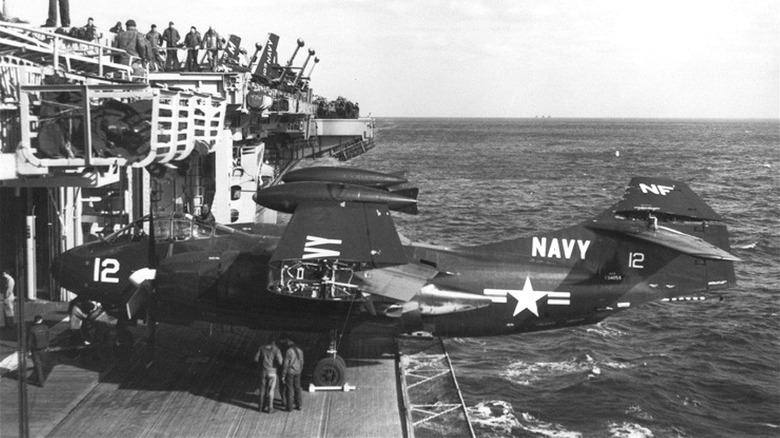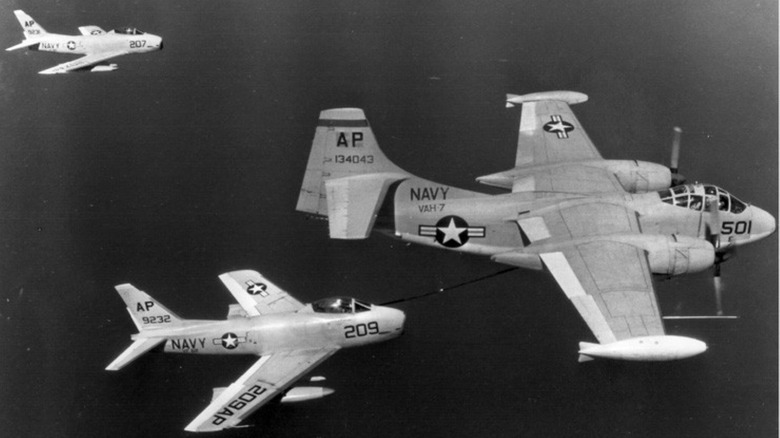The Incredible 4,800 Horsepower Plane Designed To Carry A Nuclear Bomb
After the surrender of Nazi Germany in the closing days of World War II, the United States dropped two atomic bombs on Japan, one on the city of Hiroshima on August 6th, 1945, and the other on Nagasaki on August 9th, 1945. The bombing resulted in a huge loss of life and forced Imperial Japan to surrender and end the war. The aircraft that carried the two atomic bombs were Boeing B-29 Stratofortresses and represented the best the United States had in the way of long-range bombers.
At the beginning of the war, bombers like the earlier B-17 and the aforementioned B-29 were designed to carry conventional ordnance to drop on enemy targets and not nuclear weapons. The B-29 was chosen for the mission over Japan because it had the best carrying capability at the time. The end of the war plunged the world into a new nuclear age where the possibility of an all-out nuclear war was a real possibility and the United State's on-hand arsenal needed to reflect that.
Nuclear-capable bombers like the long-range B-47 and B-52 would eventually come along and have things covered when the target was in another continent, but for aircraft carrier operations in the interim period, Boeing came up with a bizarre design that would be known as the AJ Savage.
The first plane made for nuclear war
The AJ Savage, according to Boeing carries the distinction of being the very first bomber designed to carry a nuclear payload when it was first penned in 1946. The first flight wasn't until 1948. The actual function of the AJ Savage wasn't that unusual. It was a carrier-based medium bomber that could carry atomic weapons. The actual execution was where it became less than conventional. For starters, it wasn't just a propellor plane or just a jet. It used two traditional piston-driven propellors on the wings and a turbojet in the tail for propulsion. Even though propellor-driven aircraft were quickly going out of style, the two engines used to drive the props were not slackers. The Savage was equipped with two Pratt and Whitney R-2800-44W radial engines that made a combined 4,800 horsepower. The Allison turbojet helped things out by generating 4,600 pounds of thrust. The plane had a top speed of 471 miles per hour.
The aircraft was never a huge success and only 140 of the planes were ever produced. It was reportedly unpopular with aircraft carrier crews due to its size and relative unreliability. In addition to being a bomber, the Savage also served as a photoreconnaissance plane and airborne tanker but it was eventually retired for good in 1960, about 12 years after the first flight.

